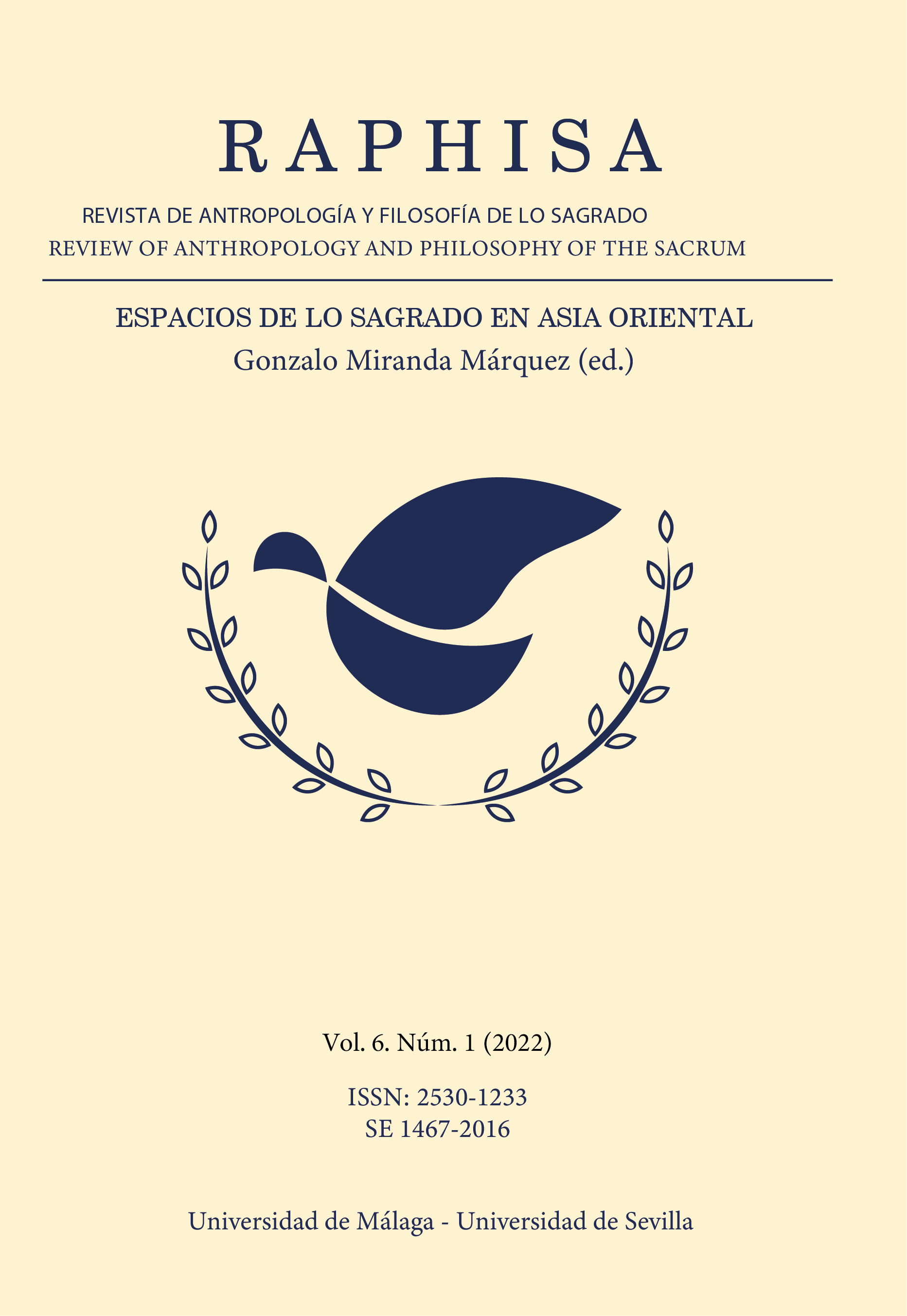Sinonimia cultural: una perspectiva trans-lingüística sobre la comprensión de los espacios sagrados
DOI:
https://doi.org/10.24310/Raphisa.2022.v6i1.14629Palabras clave:
sinonimia cultural, espacio sagrado, comprensión, linguoculturología, ChinaResumen
Este estudio explora cómo las personas con diferentes antecedentes culturales comprenden diversos espacios sagrados en todo el mundo, desde una perspectiva interlingüística. Los desafíos que rodean la inteligibilidad se relacionan con la semejanza espacial, la complejidad de la religión, así como con muchos nombres propios oscuros. Con la lexicalización de conceptos religiosos relevantes se generan “sinónimos culturales”. A través de la inspección del vocabulario dentro del dominio de "TEMPLO" como ejemplo, se ha dilucidado la sinonimia cultural del léxico chino para demostrar la complejidad espiritual. Con base en la teoría de la “competencia
múltiple”, se propone una hipótesis razonable sobre la comprensión transcultural del espacio sagrado: los individuos multicompetentes pueden tener otras comprensiones sobre los espacios sagrados en comparación con los monolingües de la lengua nativa o de destino; Un experimentador monolingüe o transcultural sin conocimiento del idioma regional depende de la traducción para aprehender el espacio sagrado, lo que
puede resultar en confusión; Las traducciones deficientes también pueden interferir con las personas multicompetentes, mientras que su conocimiento lingüístico les brinda más posibilidades de diferenciar sinónimos culturales y, en consecuencia, aclarar cualquier percepción equivocada.
Descargas
Métricas
Citas
Cook, V. J. (1991). “The poverty-of-the-stimulus argument and multicompetence”. Second Language Research, 7(2), 103-117.
Cook, V. J. (1992). “Evidence for Multicompetence”. Language Learning, 42(4), 557-591.
Cook, V. J., & Li Wei (eds) (2016). The Cambridge Handbook of Linguistic Multicompetence. Cambridge: Cambridge University Press.
Eliade, M. (1961). The sacred and the profane: The nature of religion. Trans. Willard R. Trask. New York: Harper and Brothers.
Hong Chengyu (???, 2017). “???????????”. ???????????????1: 106-112.
Li Min (??, 2005). “????????????”. ???????? 3: 42-45.
Ling Haicheng (2005), Buddhism in China. Trans. Liu Jun & Xie Tao. Beijing: China Intercontinental Press.
Su Xinchun (???, 2013). ????????. ??: ?????.
Wang Lu (??, 2011). “????????????”. ???? 6: 126-127.
Yong Heming (???, 2006). ??????. ??: ????.
Zeng Zhaocong (???, 2004). “?????????????”. ???????????????7: 46-49.
Zhang Minghua (???, 1998). ????????. ??: ?????. Revised Edition of 2010, ??: ?????????.
Zhou Guangqing (???, 2012). ??????·??????. ??: ?????.
Zhuang Enzhong (???, 2007). “?????????????”. ?????????????4: 63-68.
Zou Feng (??, 2006). ????????. ??: ???????.
Descargas
Publicado
Cómo citar
Número
Sección
Licencia
Los textos publicados en Raphisa son de dominio público. Tras la publicación en RAPHISA, los autores mantienen todos los derechos de autor, sin restricciones, y el copyright de sus textos.






